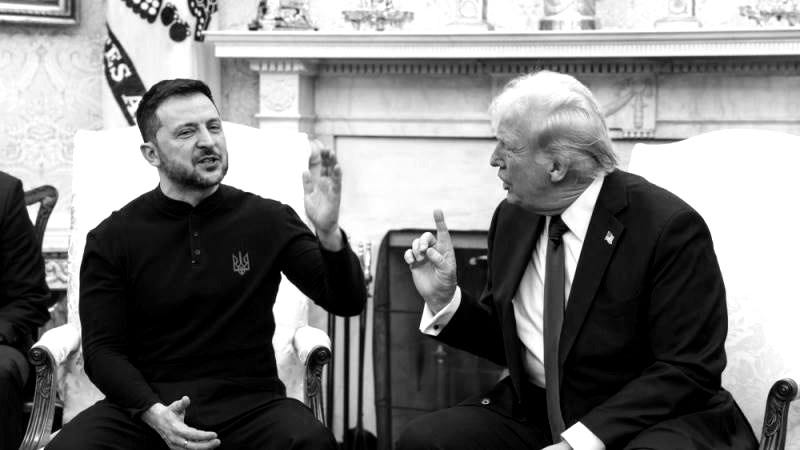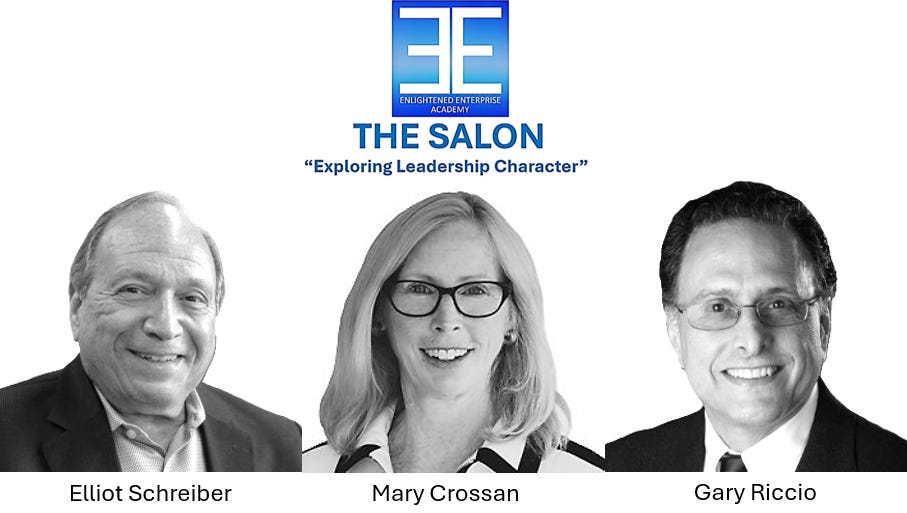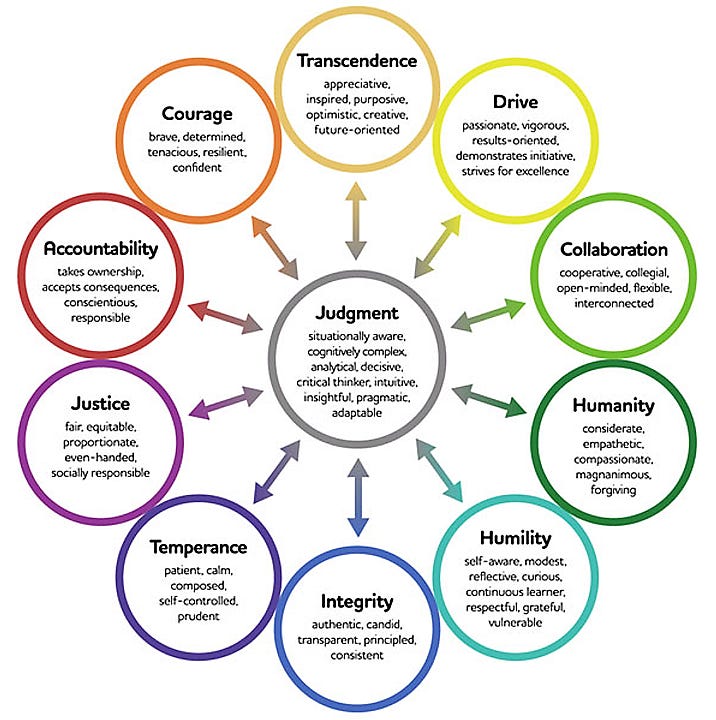A Crisis Of Leadership Character?
Today, on behalf of the Enlightened Enterprise Academy I hosted a dialogue with Mary Crossan, with special guests Gary Riccio and Elliot Schreiber. The topic was “Exploring Leadership Character” (recording available next week). This follows an interview I did on the topic with Mary Crossan whose book is “Developing Leadership Character.” And the interview was for the Enlightened Enterprise Academy’s first Salon series, “Inflection.”
The Enlightened Enterprise Academy believes we are at an inflection point in human development that will come to be seen viewed as being akin to the transition from the Renaissance to the first Enlightenment. Features of it are referred to as the Metacrisis, Polycrisis and / or permacrisis. And our concern is that addressing out 21st century challenges will require far better leaders than we seem to have today. This was the reason for exploring leadership character.
Coincidentally Mary’s latest Article for Forbes was also published today. The title, “Addressing The Crisis Of Leadership Character” could not have been more timely given what we have just witnessed in the Oval Office meeting between Donald Trump and Vladimir Zelensky.
Mary’s opening paragraph on the Forbes article reads, “In the four decades I have worked in strategic leadership, I don’t recall seeing such an intensely divisive time, with blogs and posts casting leaders as either villains or heroes, renewing questions about what makes effective leadership.”
In the article she goes on to address questions like, “If character is so important, how do these leaders rise to power? Why are they successful and wealthy? What can we do about it?” She is referring to the leaders whose behaviours lead to crises.
Mary argues, “Understanding the architecture of the interconnected dimensions of character is essential to identifying and diagnosing character imbalances.” Based on research she and colleagues developed a framework of leader character with 11 interconnected dimensions to do aid the necessary understanding.
Understanding this architecture is important because “without this clarity, it’s easy to get confused about how these dimensions operate in deficient and excessive vice states,” she says.
Later in the article Mary notes, “the ongoing neglect of certain dimensions, like humility, often stems from a lack of understanding of character's architecture and how deficiencies in humility can seriously impair judgment and overall well-being.” She then adds…..
“We tend to glorify certain aspects of character, such as drive and courage, while neglecting others, like humility, humanity, temperance, and transcendence. Failing to understand character means perpetuating problems of character imbalances in organizations and society. Such confusion leads to selecting and promoting leaders with character imbalances.”
Even more poignant given this evening’s spectacle was Mary’s comment……
“When leaders make and implement decisions in a disrespectful, arrogant, inhumane, and belligerent manner, there is good reason to question their character-based judgment.” “Trying to excuse those actions by claiming good intentions, or conversely that we didn’t mean it, saying it isn’t personal, or just a negotiating tactic, does not absolve the action or negate the stitch.”
Mary says people “may also question the importance of character when they see leaders with imbalanced character achieving success.” It them becomes easy to “overlook the potential “ticking time bomb” hidden in these results. Instances like Enron, Volkswagen, Wells Fargo, and General Electric demonstrate how apparent success can mask underlying issues that are eventually exposed with serious, if not catastrophic, consequences.”
In Mary’s opinion, “The mistake we make is focusing on leadership style instead of the strengths and weaknesses of character dimensions that inform judgment.”
“What can be done about character depends on one of four archetypes,” Mary argues. If you want to know what all four are, read the Forbes article, here I will mention only one, “The destructive archetype” or “compromised character.” It describes “someone with imbalances they don’t recognize or won’t change.”
About compromised characters Mary says, “Ideally, there are checks and balances within the system that put up guard rails to reduce the likelihood such people will be destructive and hold or retain power. However, the reality is that the lack of attention to character has allowed and often enabled the imbalances.”
As for a solution Mary says, “compromised character becomes evident, and disillusionment sets in, when it is allowed to persist. History shows it can persist, and while it does, there is an even greater need to lean into character as an antidote.” That “is primarily about starting with our own character development to navigate this very complex and challenging world.”
To conclude, I have long argued that we have a “global governance crisis.” That is because we have what Mary calls, “The Crisis of Leadership Character.” Mary argues “character is at least as important as capabilities. That reminds of the other reason we have a crisis of both governance and leadership - most of our leaders lack both character and capabilities to address today’s challenges. I imagine those who has seen what happened in the White House today are likely to agree.
· Watch my Interview with Mary
· And look our for the recording of the event we ran today (to be published next week






